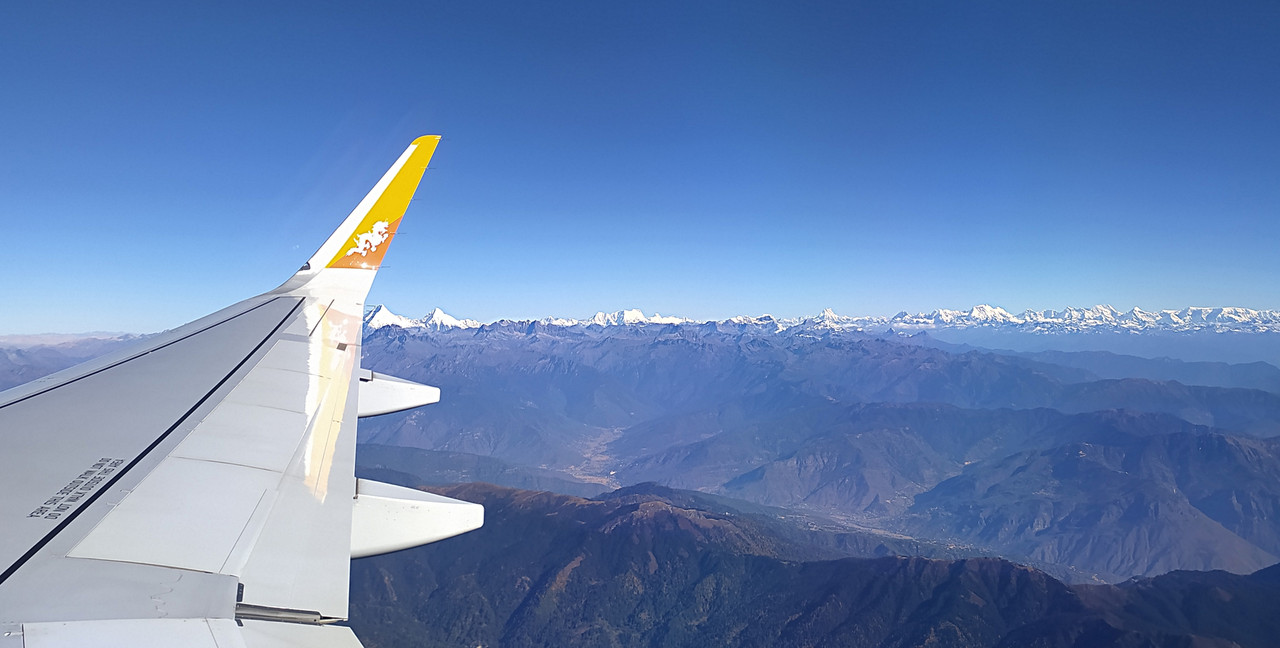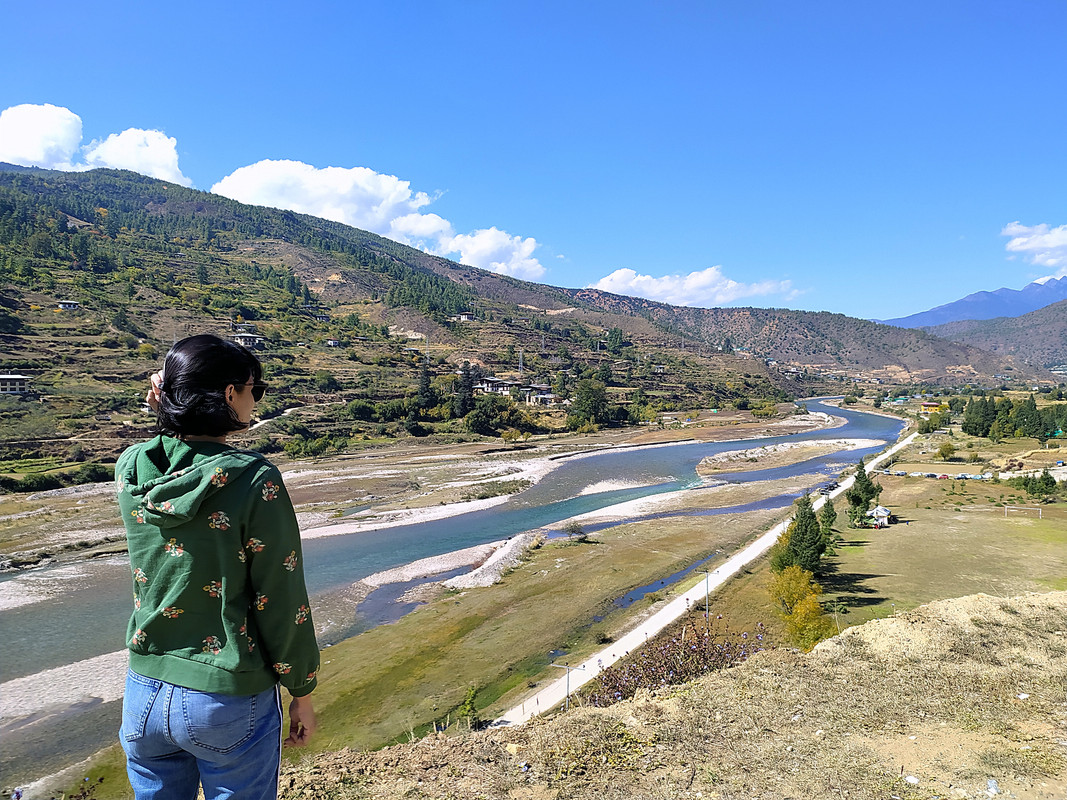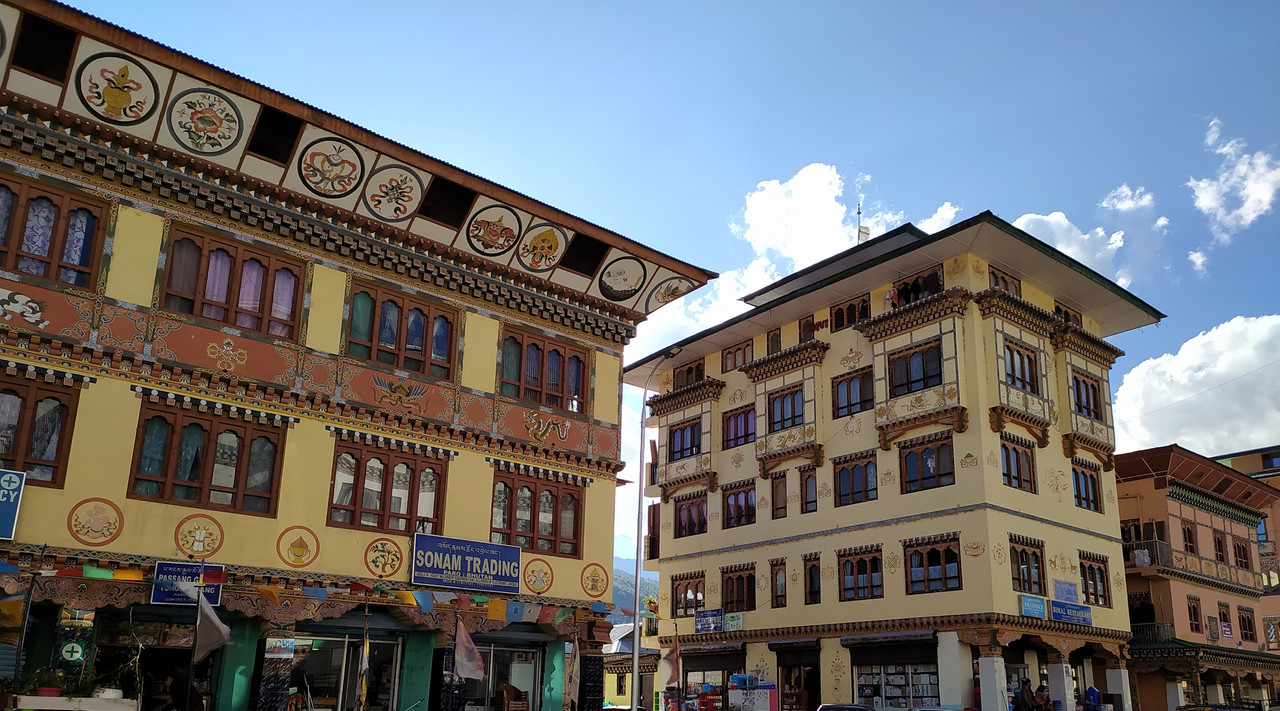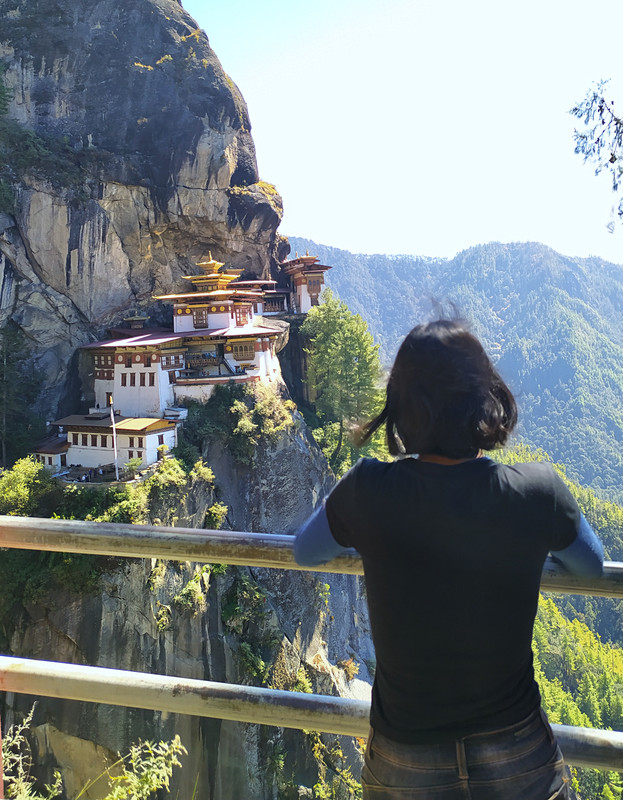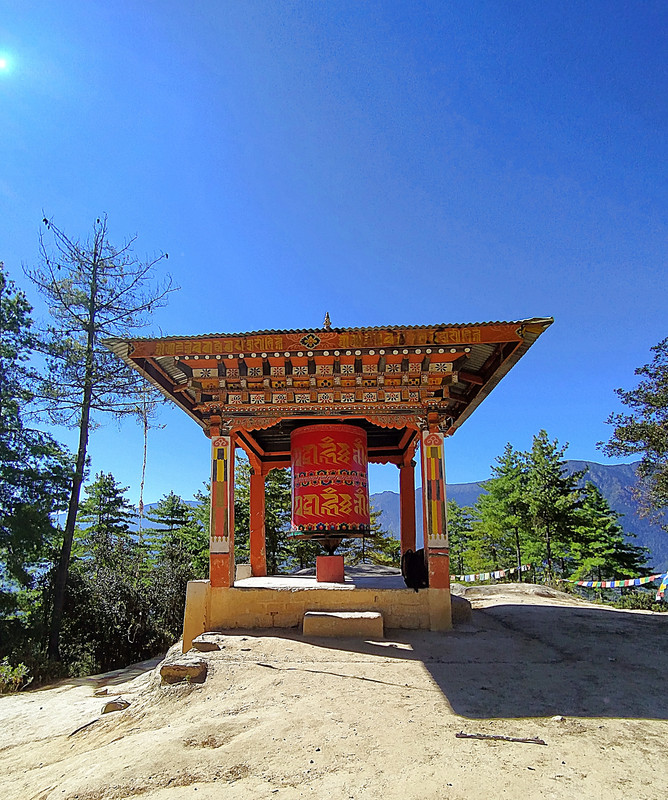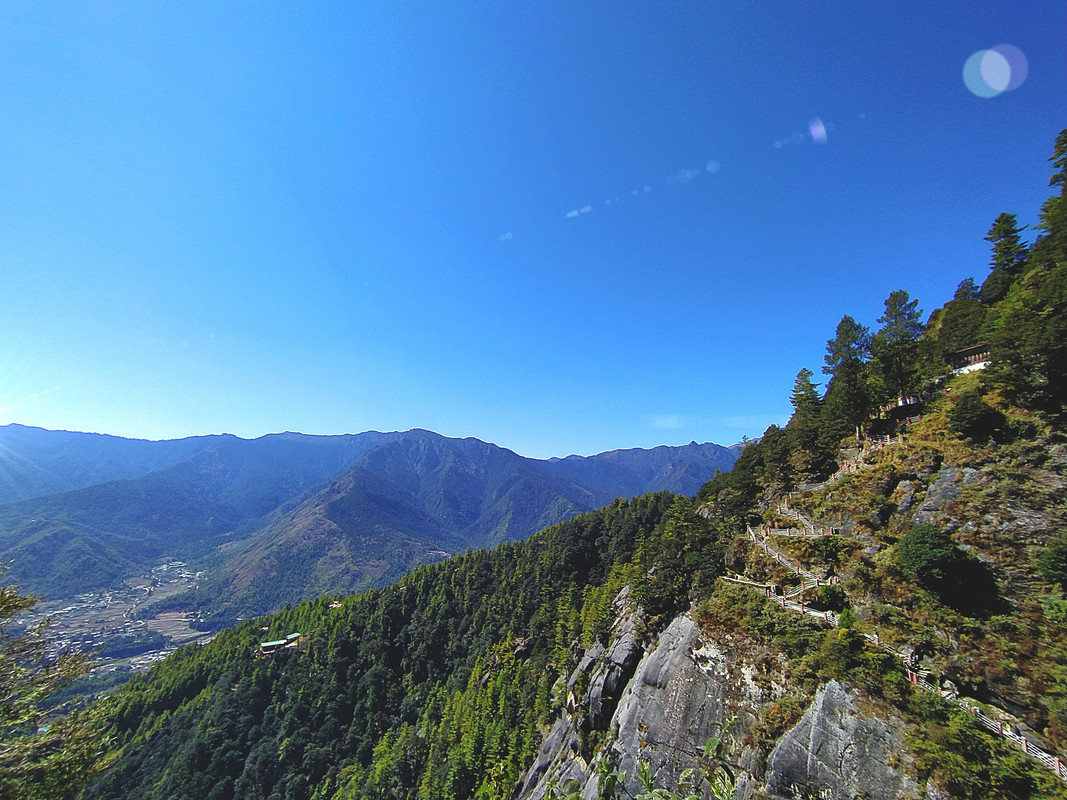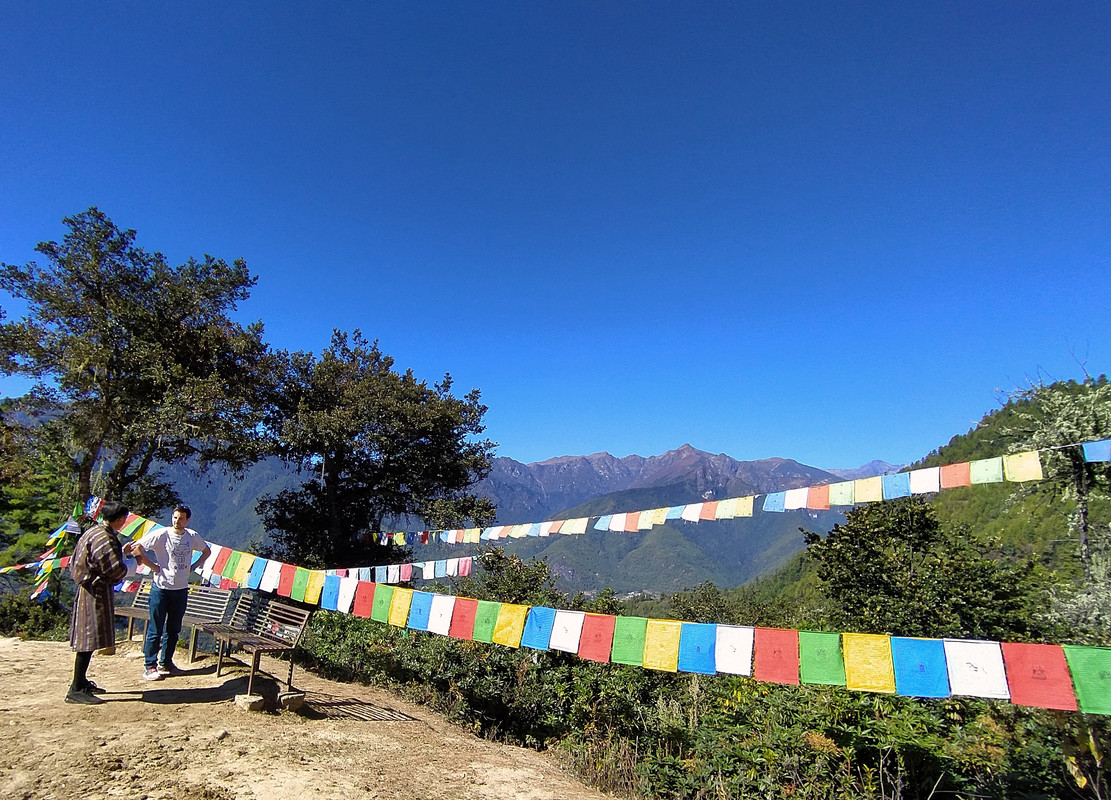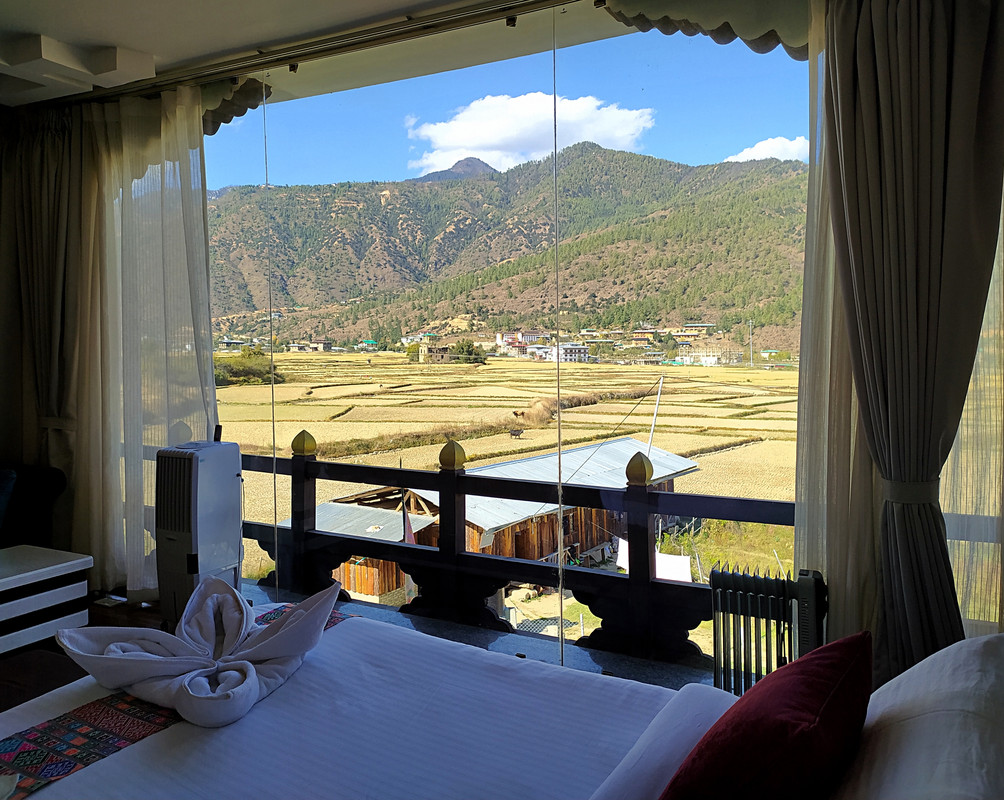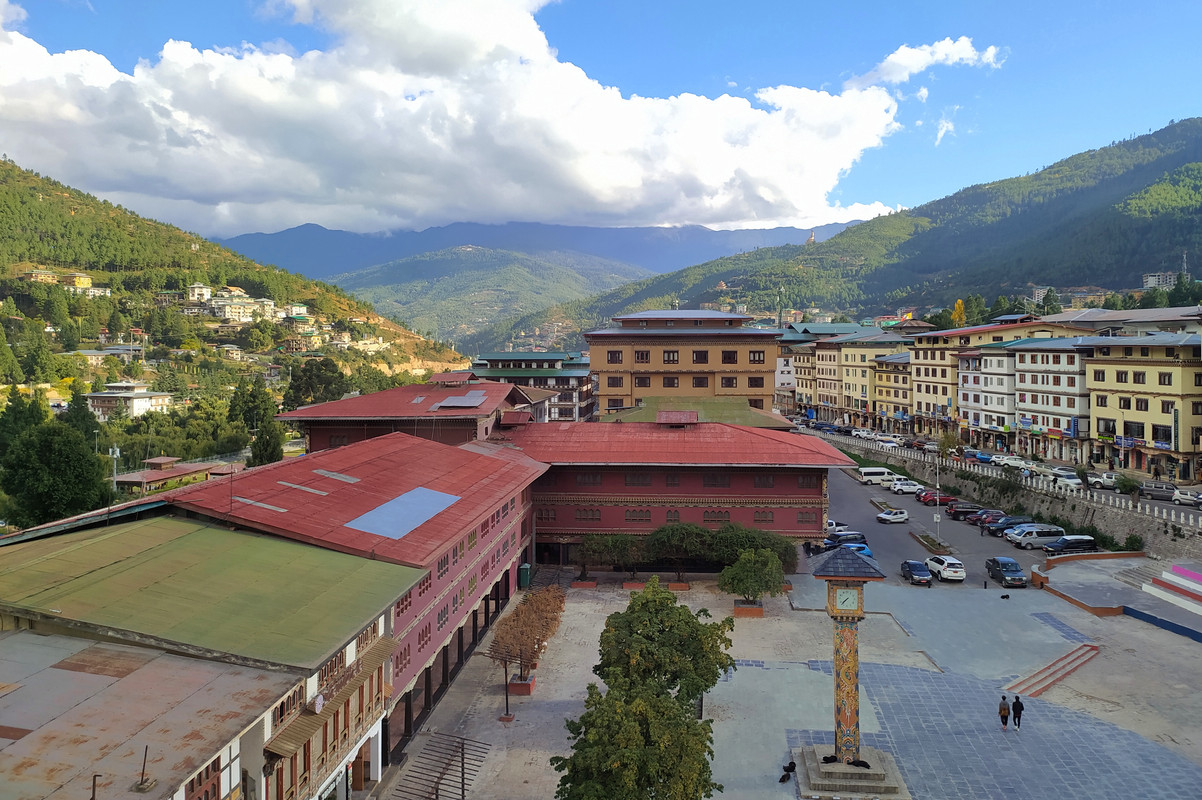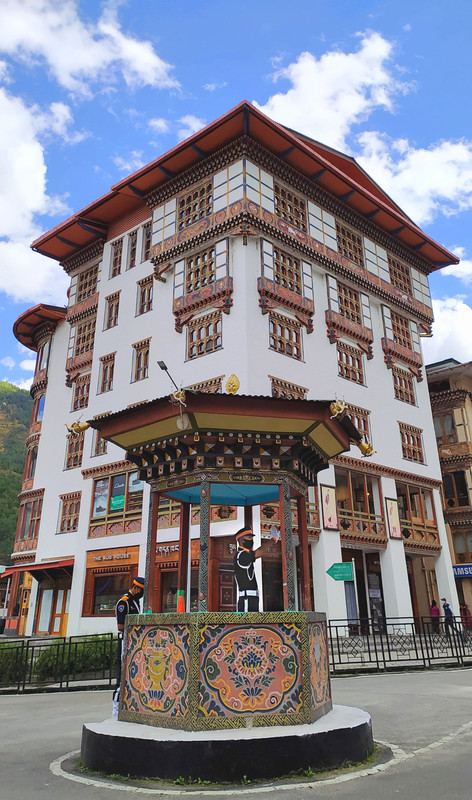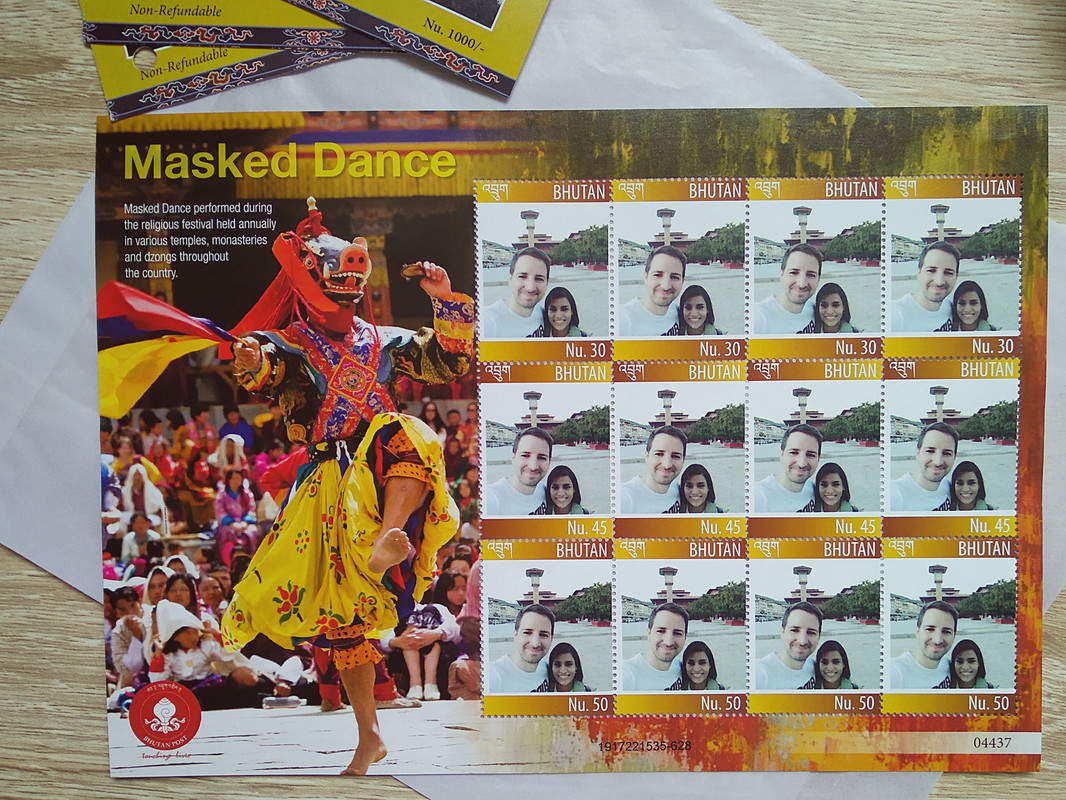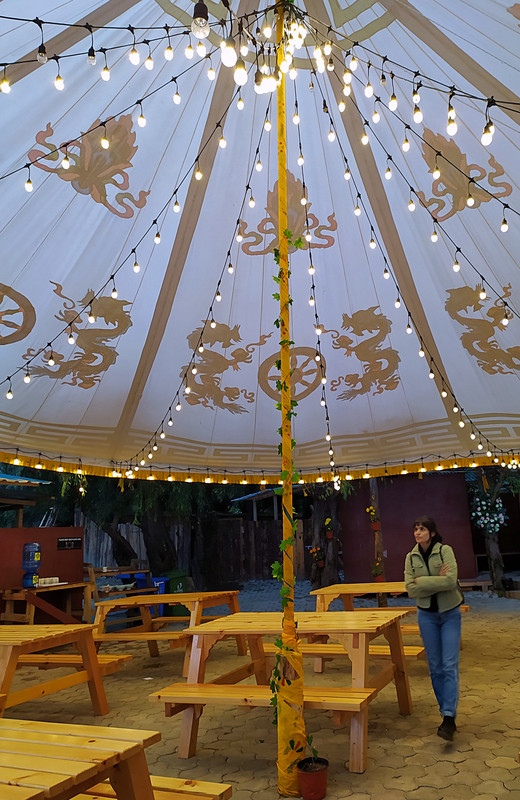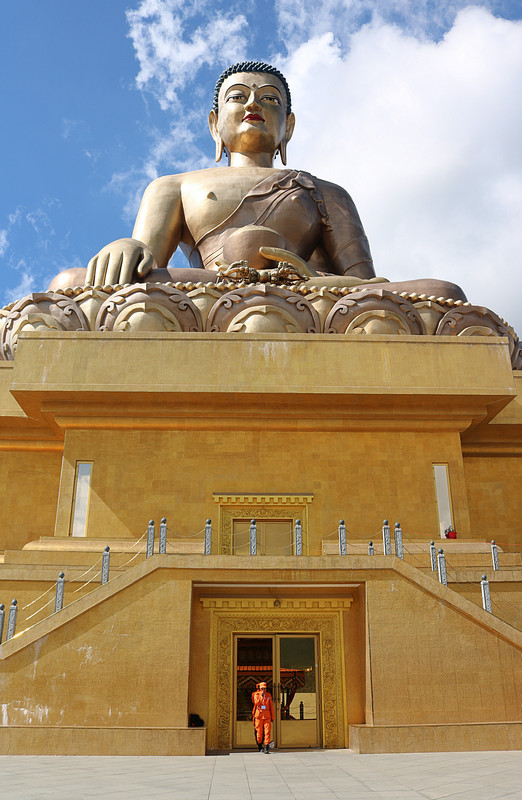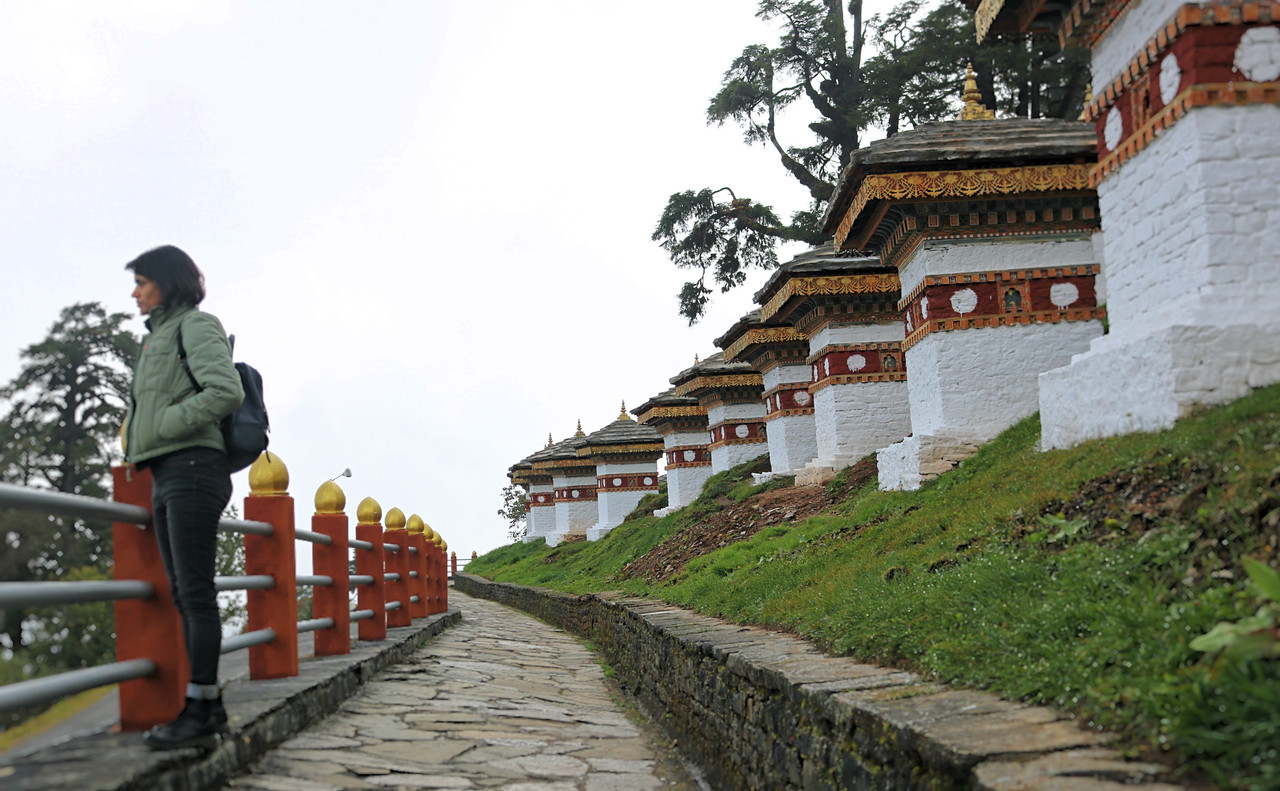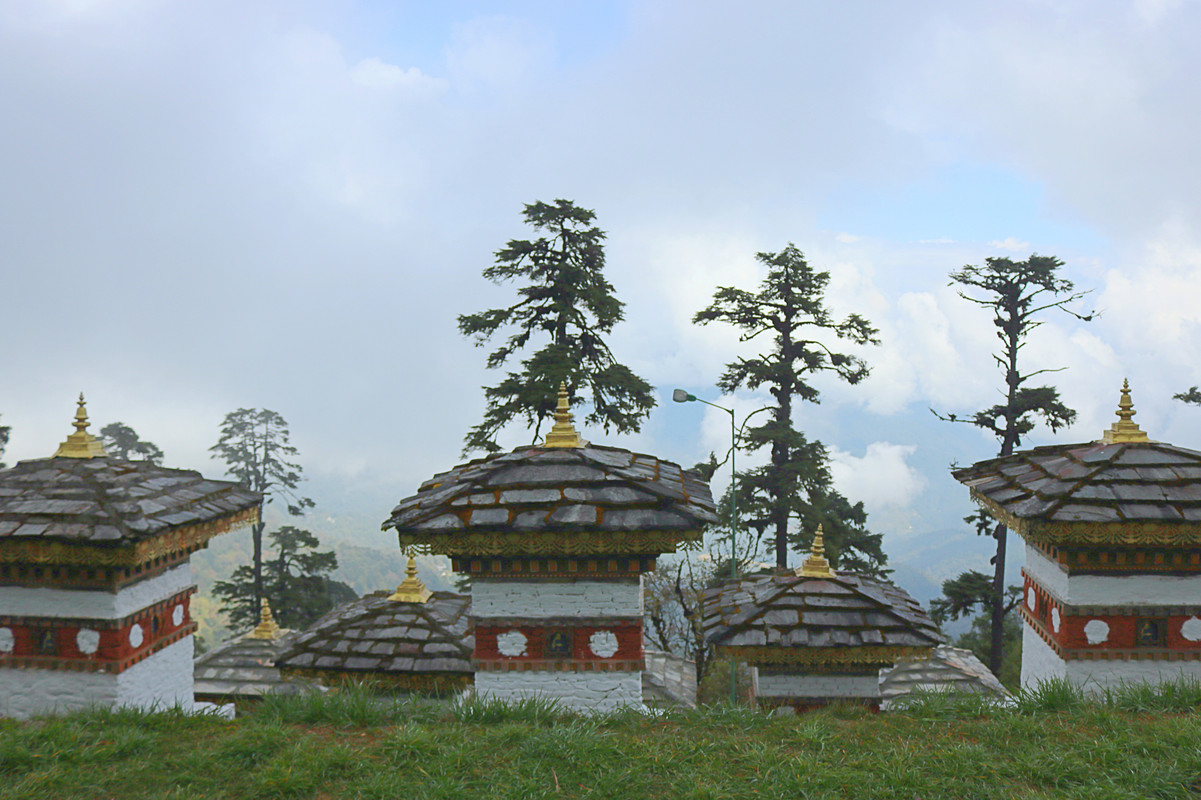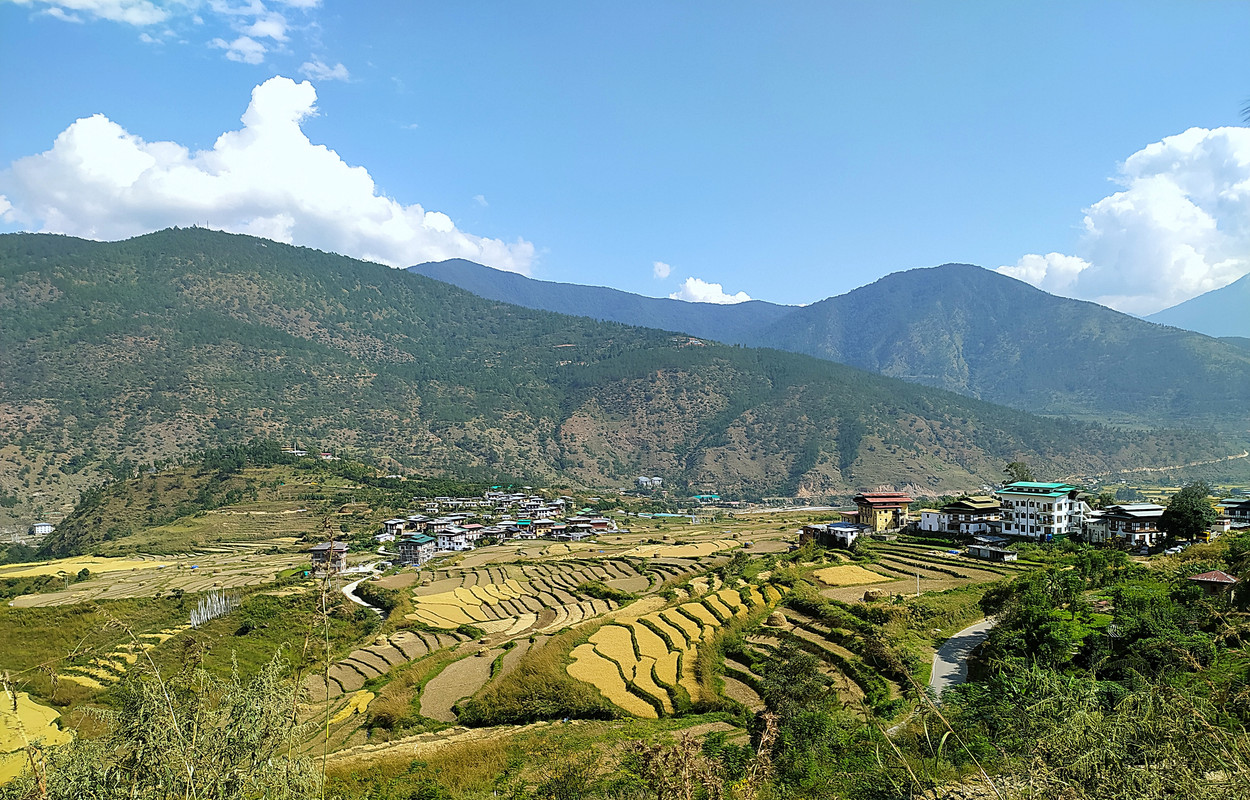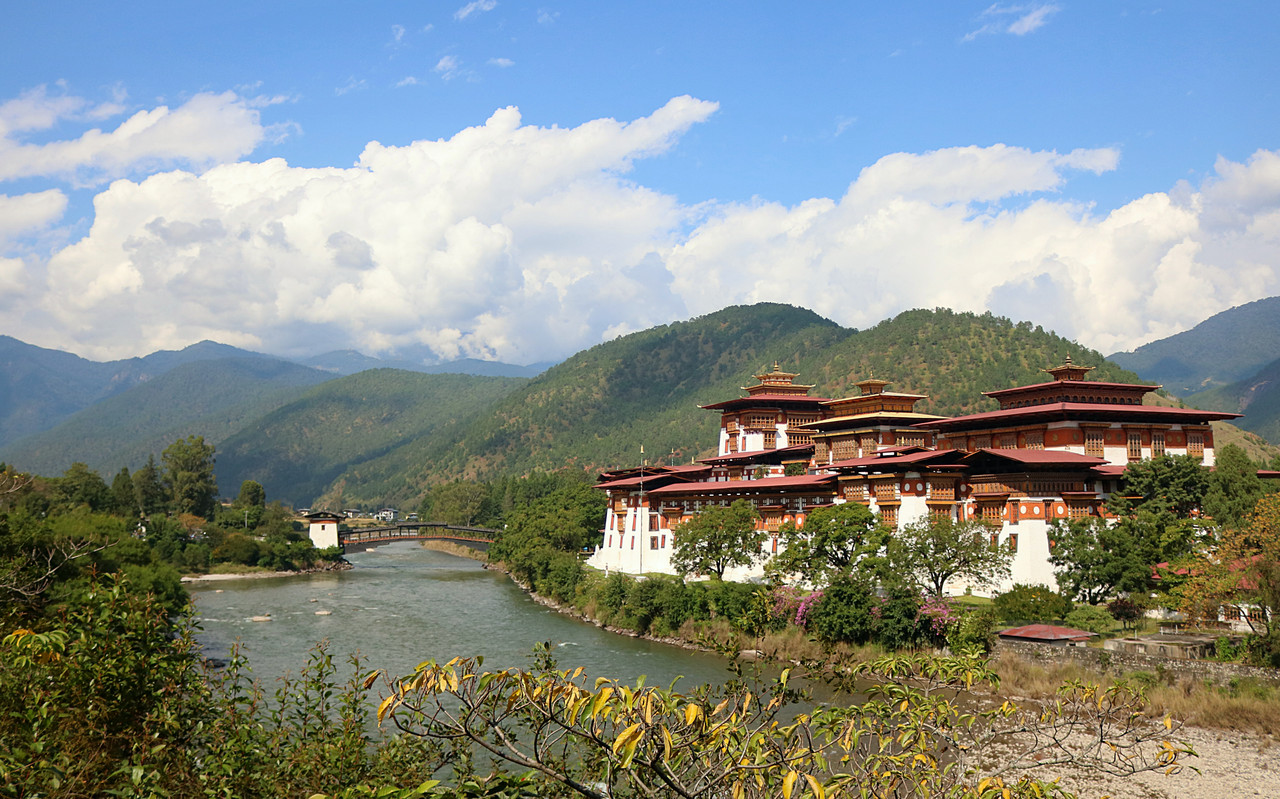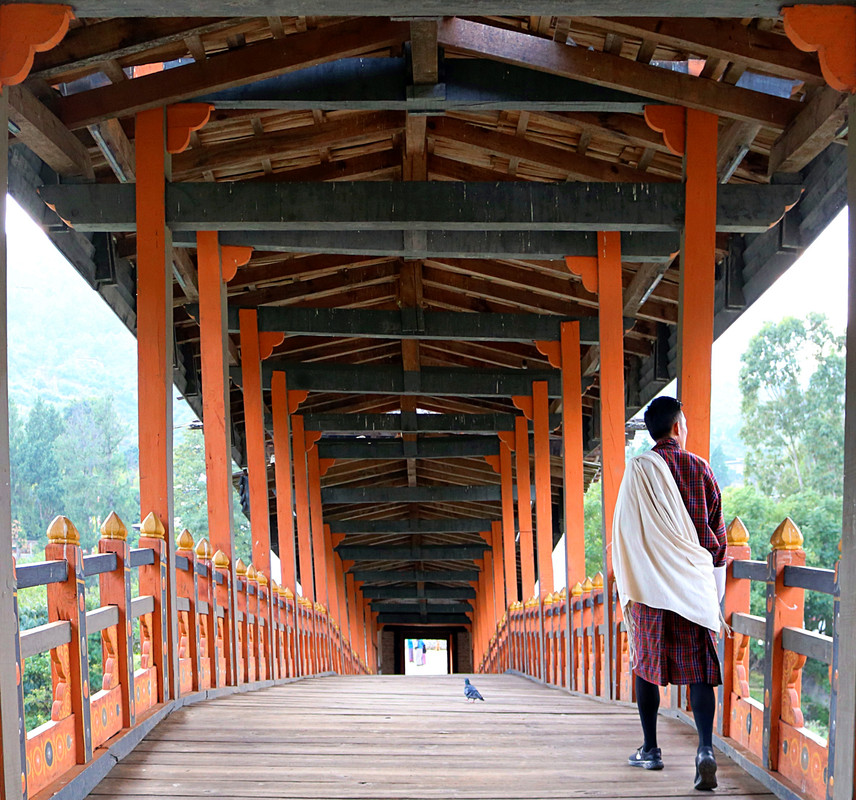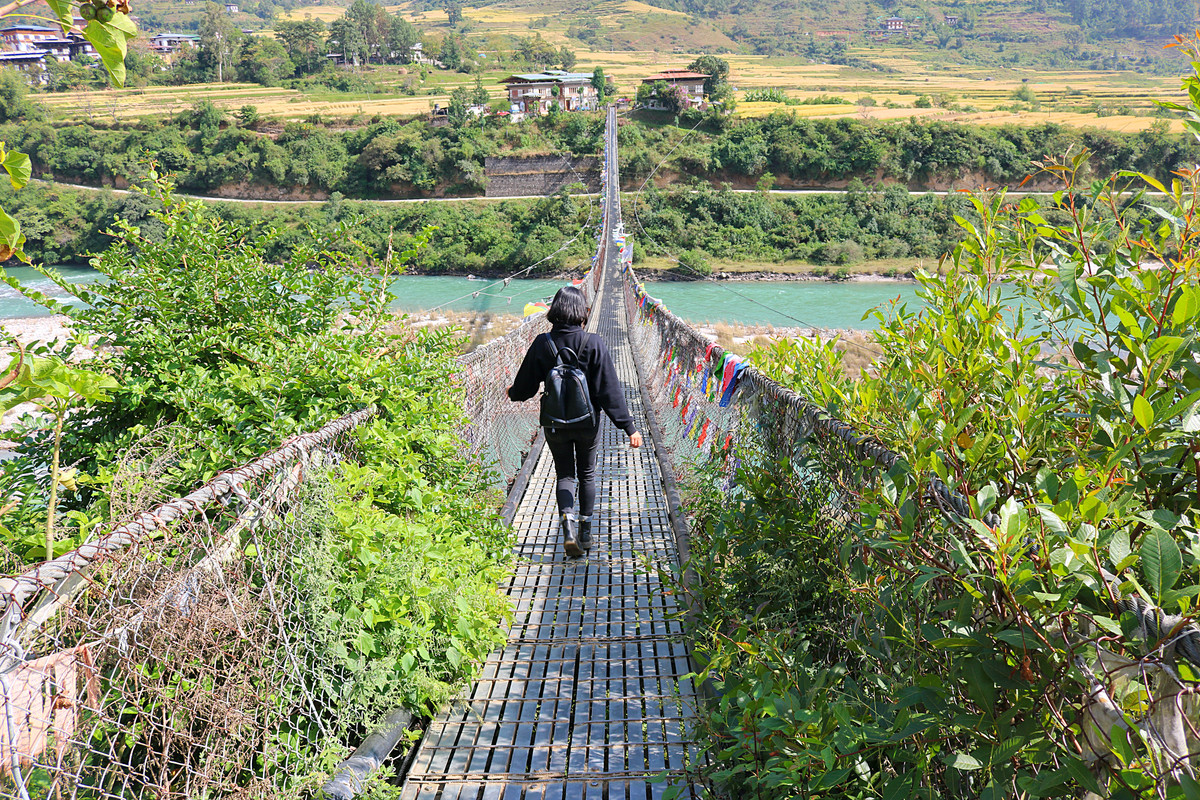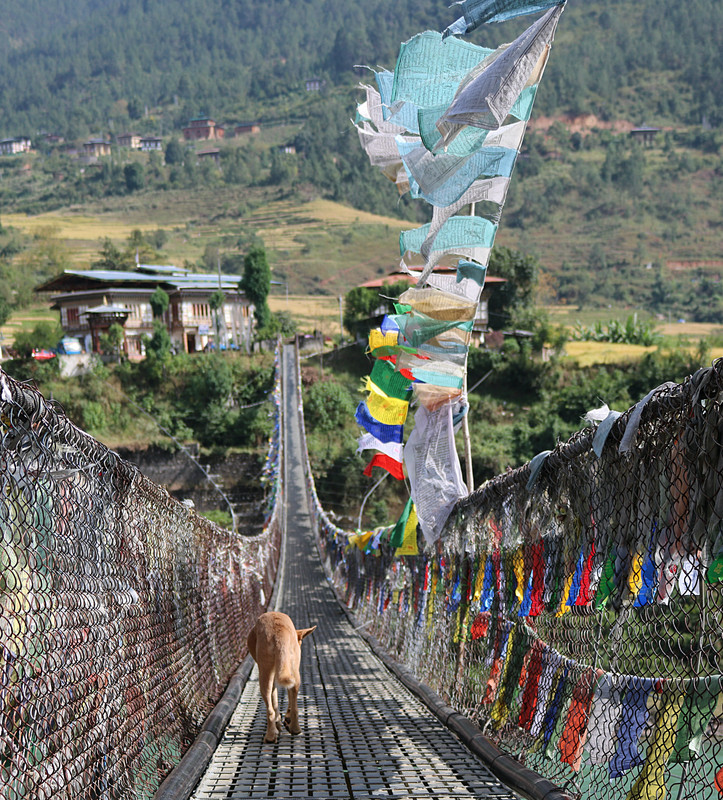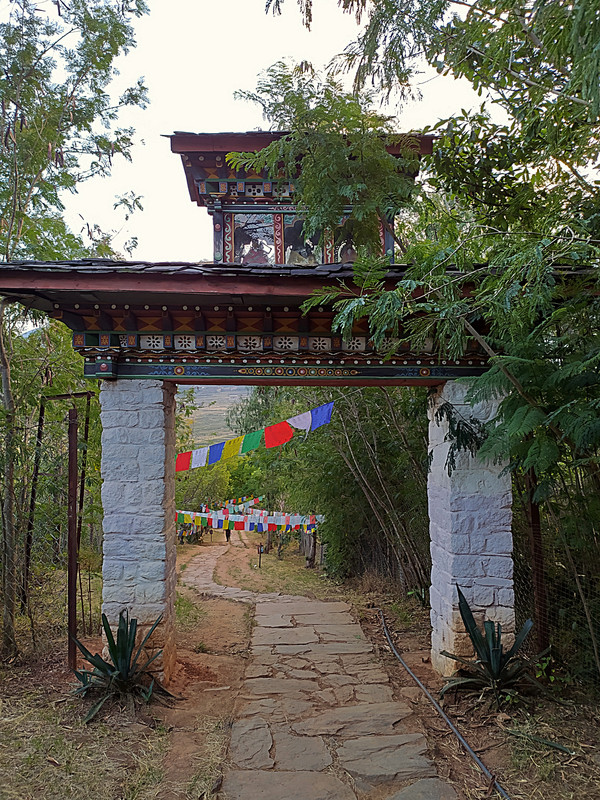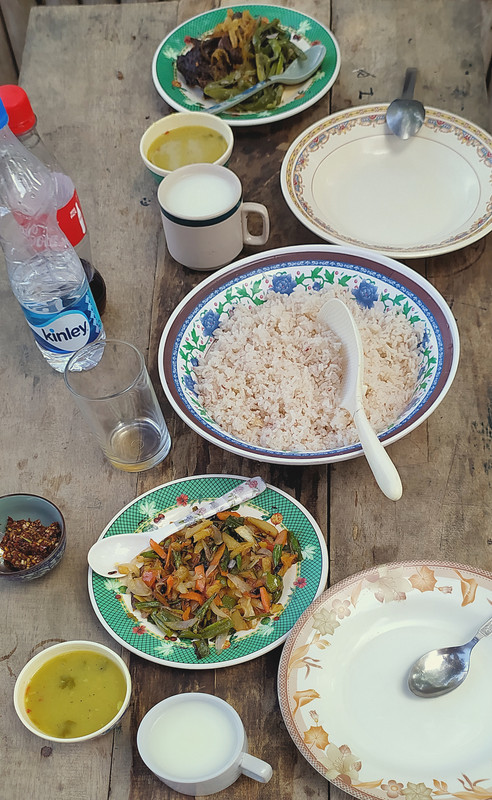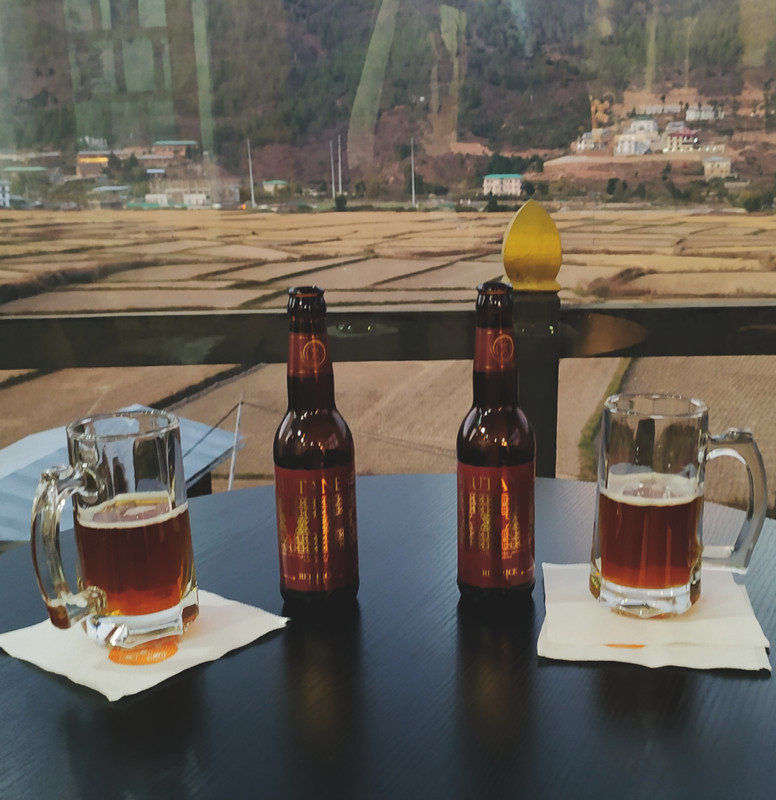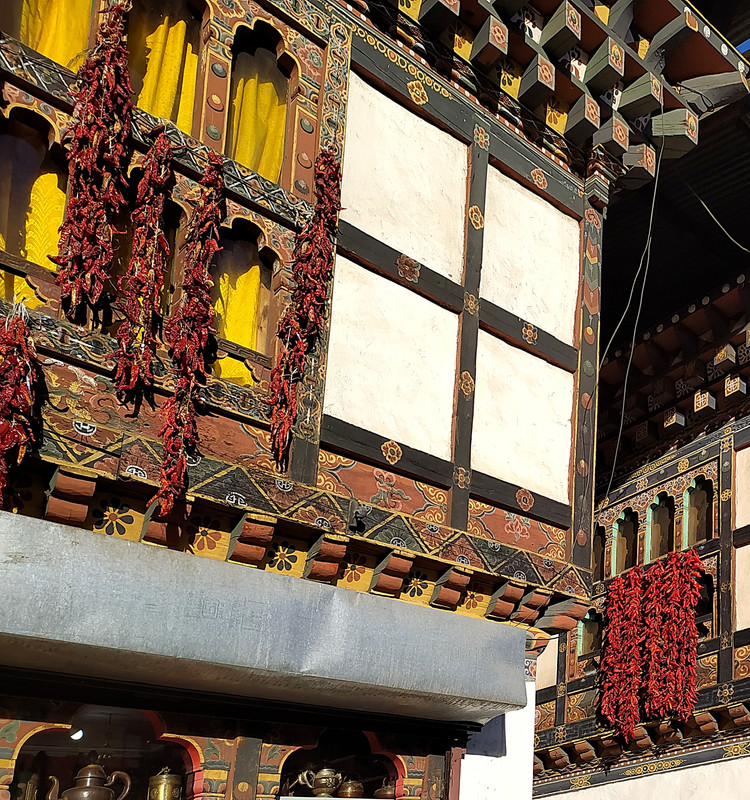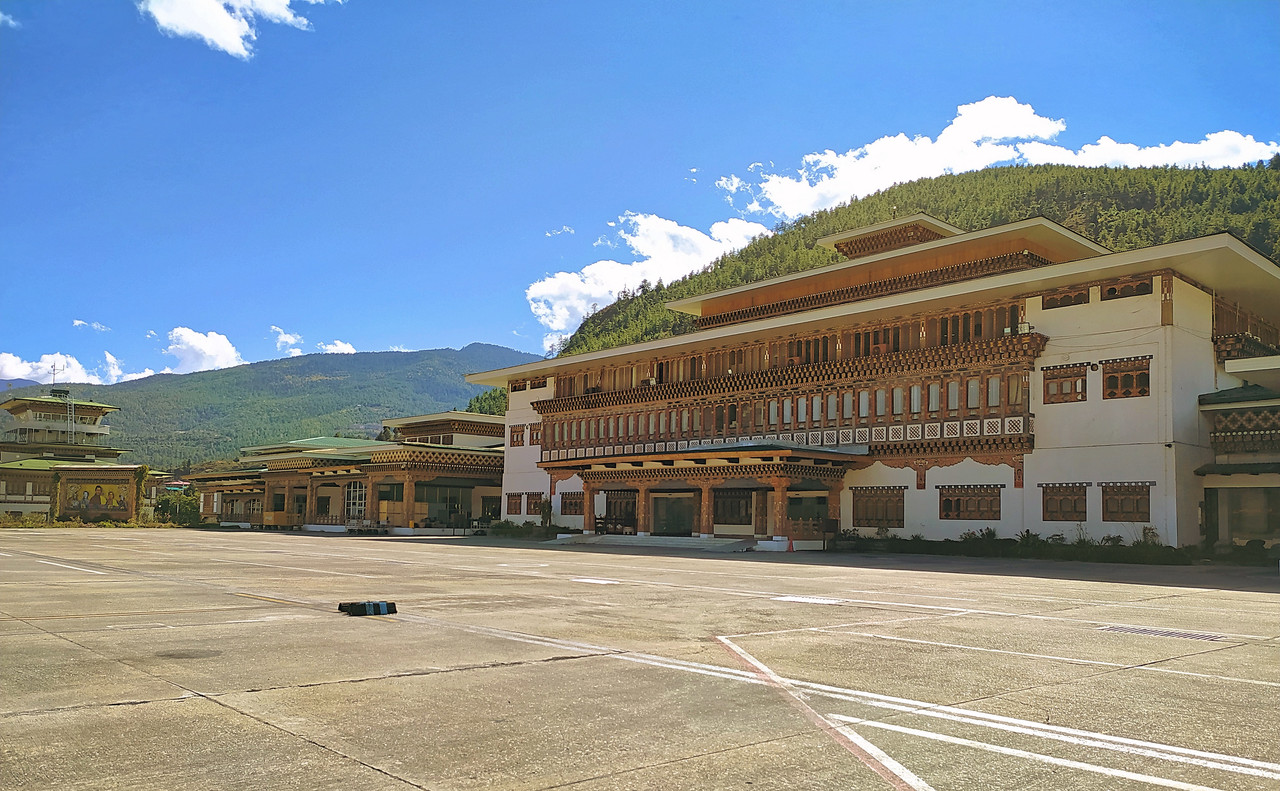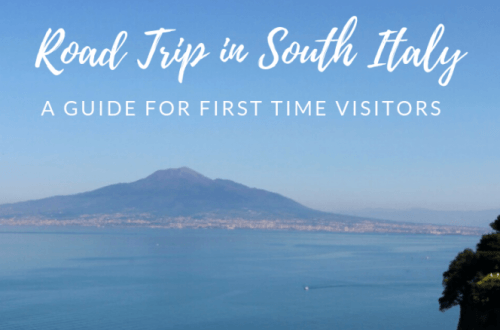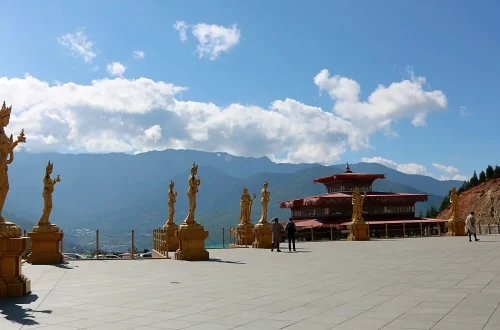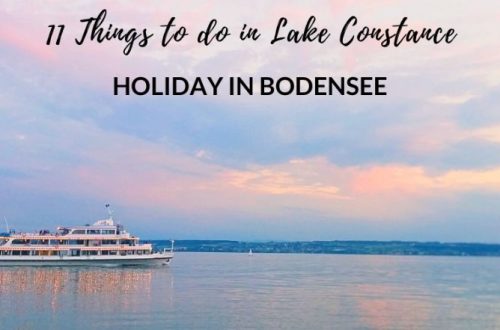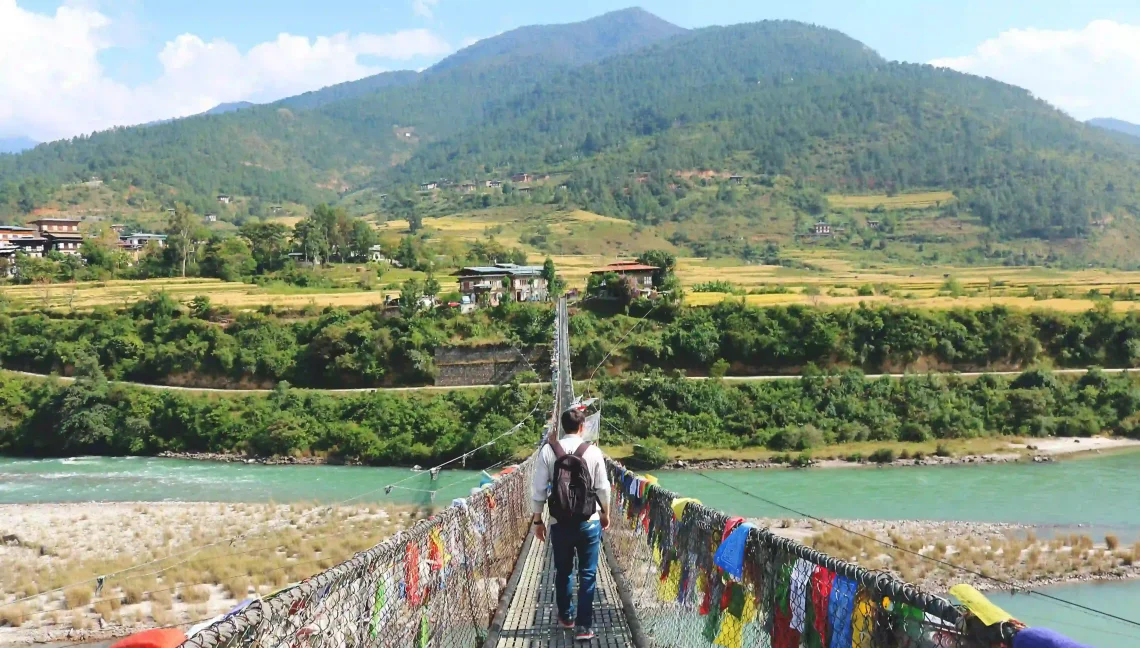
Bhutan Travel Guide 2023: Things to Do in Bhutan
Top Takeaways From This Post
Last updated on December 7th, 2022 at 03:47 pm
Are you thinking about travelling to Bhutan in 2023? Read this post to find out all the exciting places to visit and things to do in Bhutan in one week.
Bhutan is a tiny landlocked Buddhist kingdom in the Himalayas. It was a closed country until the 1990s and is still considered one of the most exotic places for avid travellers. Bhutan also happens to have one of the highest tourist taxes in the world.
I recently had a chance to spend a week in Bhutan as a part of my Himalayan tour.
If you are considering travelling to this stunning Himalayan kingdom, but feeling unsure about what to do in Bhutan, here are some of my recommendations.
Things to Do in Bhutan
Related: How to plan a trip to Bhutan without a tour operator
Top places to visit in Bhutan
The number of places you can visit in Bhutan depends on the time you have in the country. Here are the main tourist attractions of Bhutan and activities that you can easily cover in a week-long trip.
Paro
Paro is a valley town in Bhutan, west of the capital, Thimphu. It is the site of the country’s only international airport. The city is also known for the many sacred sites in the region.
Things to do in Paro
Go souvenir shopping in Paro city
Paro city is great for souvenir shopping. The main road of the city is lined with shops selling Bhutanese handicrafts and arts. It is a great place to buy Thangka art, traditional Bhutanese wooden bowls and cutlery, or pretty much anything that catches your fancy.
We bought a cute maple wood Dhapa, a wooden spherical bowl traditionally used in Bhutan. We were told that it is typically used by Bhutanese couples since it transforms into two deep plates when you open it. It’s supposed to symbolise love and romance, apparently!
Hike up to Paro Taktsang (aka Tiger’s Nest)
This is a must-do thing in Bhutan!
Paro Taktsang is a sacred Vajrayana Buddhist site located on the cliffside of the upper Paro valley in Bhutan. Built in the late 17th century on a cave set into the cliff, Paro Taktsang Monastery sits precariously 3,000 metres above the Paro valley.
According to the local legends, Guru Padmasambhava meditated and practised with students at this site before departing the kingdom of Tibet in the early 9th century. Padmasambhava is credited with introducing Vajrayana Buddhism to Bhutan. Later a monastery complex was built in 1692 around the cave.
Today, Paro Taktsang is the best known of the thirteen Taktsang or “tiger lair” caves in which Guru Padmasambhava and his students meditated.
Depending on your fitness level, you will find the hike to Tiger’s Nest moderate to difficult. If you have an average level of fitness, you should be able to finish the climb between 3 to 5 hours at a steady pace.
The hike starts through a cool wooded forest which I found an easy start. The main part of the Tiger’s Nest hike is also not particularly hard. The entire route consists of a gradual incline up the cliff, with some relatively flat stretches. As the path begins to get steeper, it zig-zags between the trees which makes the slope easier to climb.
The most strenuous, in my experience, were the stretches where you are fully exposed to the sun with no shaded areas. The heat depends on the time of the year you visit Bhutan, however, the atmosphere is thinner in high-altitude regions and Paro is no exception. Also, as you get higher the air gets thinner. You might notice your lungs working extra hard once you are around 2500 m high.
I recommend taking regular water breaks and catching your breath. Even with good fitness levels and hiking experience my husband and I were occasionally winded. On the other hand, our guide who is born and raised in Bhutan did not break a sweat.
Soak in a hot stone bath
Technically, you don’t need to be in Paro to get a hot stone bath. Hotels and resorts all over Bhutan offer this. However, a hot stone bath with aromatic Himalayan herbs is the best way to end the day after a hike to Paro Taktsang.
A Bhutanese hot stone bath is the traditional practice of bathing in Menchu (medicinal water) heated by fire-roasted river stones in a wooden tub. Menchu consists of fresh water and Artemisia absinthium (wormwood) leaves. Bhutanese believe that Himalayan river stones are rich with minerals and properties that can alleviate certain body aches or skin conditions. Well, we don’t have proof of that, however, we can testify that it was a great way to relax our overworked muscles after a day of hiking.
I would recommend asking your hotels to organise a hot stone bath for you. Better still you can stay at one that offers one in their onsite spa.
Thimphu
Thimphu is the capital city of Bhutan. It is a sleepy town by every standard. The city centre, pictured below does not start seeing people until 9 am even on weekdays.
Don’t get me wrong though, Thimphu has its own unique Himalayan charm.
While the days are quiet and calm in Thimpu, the streets come alive in the evening when people start gathering at cafes and bars after work. Weekends in Thimphu also see streets buzzing with people out and about. We enjoyed laid-back evenings sitting outside cafes with snacks and hot cups of masala chai and occasionally Druk beer.
Thimphu is a great place to set up a base and explore some of the main tourist attractions of Bhutan.
Things to do in Thimphu
Get personalised postal stamps at Bhutan Postal Museum
The Bhutan Postal Museum is totally worth a visit for anyone interested in the history of Bhutan and its postal service.
The museum showcases quality artifacts and unique stamps that depict the history of Bhutan and the journey of the postal services in Bhutan. It is walkable from the town centre of Thimphu.
One of the best parts of the Bhutan Postal Museum is its souvenir shop. You can also create your own stamps for only 500 Nu (which can even be used within Bhutan!). It definitely makes for a unique souvenir.
Here is what our own Bhutanese postal stamps turned out like!
Enjoy fresh Bhutanese food at the Centenary Farmers Market
Centenary Farmers Market in Thimphu is the largest farmers’ market in Bhutan. Farmers from all over the country gather here to sell their fresh farm produce.
The Centenary Farmer’s Market is located within a walking distance from Thimphu city centre. It is popularly known as the Sunday market, even though it is open six days a week.
It is a great place to spend a couple of hours walking around, enjoying the local vibes as people do their grocery shopping. Centenary Farmer’s Market is also a great place to buy traditional Bhutanese chilli products. They are sold in small air-tight jars which makes them easier to pack in the luggage.
There are also nice sitting areas in the market where you can buy freshly prepared Bhutanese food and enjoy a break from sightseeing.
Detach from reality at Buddha Dordenma (aka Buddha Point)
The great Buddha Dordenma, the gigantic Shakyamuni statue in the mountains of Thimphu, is one of the main tourist attractions of Bhutan.
It is traditionally called Kuensel Phodrang as it is located on the former ruins of Kuensel Phodrang palace. However, nowadays, it has been dubbed “Buddha point” by the locals.
As one of the must-see places in Bhutan, it is the largest sitting statue of the Buddha in the country measuring in at measuring 51.5 meters in height and made of solid bronze.
The magnitude of the statue up here coupled with the sweeping views of the Thimphu valley makes the entire atmosphere ethereal.
Enjoy the panoramic Himalayan views from Dochu La
The Dochu La aka Dochu Pass (La means pass in Dzongkha) is a high mountain pass on the road from Thimphu to Punakha. With an altitude of 3,100 m, it is also considered the highest motorable point in Thimphu. The pass also offers a 360-degree panoramic view of the snow-laden Bhutanese Himalayas.
Dochu La is not located in Thimphu, however, it is one of the most popular places to visit in Bhutan. Most people visit Dochu La during their day trip to Punakha from Thimphu.
This main attraction of Bhutan is also popular for its 108 memorial Chortens or Stupas known as “Druk Wangyal Chortens”.
These 108 stupas at the Dochu La are a historical landmark built to honour the fourth king of Bhutan and the soldiers who perished during the battle against Assamese insurgents in 2003.
The other Bhutanese landmarks around the Dochu pass include the Druk Wangyal Lhakhang, and a rhododendron garden, a part of the Royal Botanical Park. The forest cover on the slopes of the pass consists of cypress trees.
The weather at Dochu La generally remains foggy and chilly. However, on a clear day, panoramic views of Bhutan’s eastern Himalayas can be seen. During our visit to this popular place in Bhutan, the weather decided not to play along.
Punakha
Punakha, the former capital of Bhutan, is a quaint town in the heart of Punakha-Wangdue Valley. The scenic landscape of Punakha is full of verdant mountains and golden paddy fields. Punakha is the juncture of the Pho and Mo Chhu rivers.
Things to do in Punakha
Enjoy Dzong architecture at Punakha Dzong
As we were told a number of times by our tour guide, Punakha Dzong is the most beautiful and significant Dzongs in all of Bhutan.
Punakha Dzong is a six-storied high 17th-century fortress and sits at an average elevation of 1,200 m (3,900 ft) with a scenic, mountainous background.
It is the second oldest and second-largest dzong in the country and one of its most majestic structures, easily earning its place as one of the top tourist attractions in Bhutan.
Punakha Dzong is a great specimen of Dzong architecture, which is unique to Bhutan and Tibet. This medieval fortress is made with ecological materials; compacted earth, stones for walls and timber for doors and windows.
Punakha Dzong used to be the administrative centre and the seat of the Government of Bhutan until 1955 when the capital was moved to Thimphu.
Administrative offices of the dzong are still located inside, along with a very large, white-washed stupa and a bodhi tree in its first courtyard.
Punakha Dzong also has great cultural and religious significance for the Bhutanese. It has been the venue for the coronation of all the kings of Bhutan. It was also the site of the royal wedding of the fifth king and queen of Bhutan. Punakha Dromche, a five-day annual festival is held at the Punakha Dzong in February or March and features masked dances and music.
Cross the Punakha Suspension Bridge
Amidst all its Himalayan elegance, Punakha is also home to the marvellous Punakha suspension bridge.
You will find the glacier-blue Po Chu river and the majestic suspension bridge about 5-7 kilometres north of Punakha. The suspension bridge is about 500 meters walk from the car park.
This iron chain bridge is known as a precursor for modern suspension bridges in the world. It is perched high above the swift river Po Chu and spans about 180 meters in length, making it the second-longest suspension bridge in Bhutan.
When the wind is blowing you can feel the slight sway underneath your feet, but never enough to make you feel unsafe. This wobbly walk was definitely one of the best things to do in Bhutan for me.
Just like Punakha Dzong, Punakha Suspension Bridge is also an important part of the architectural history of Bhutan. It was built to connect the villages of Shengana, Samdingkha and Wangkha to the Palace of the Wangchuk Kings.
Even today you can see the locals carrying grocery items and children going to school across the valley through the bridge. We were joined by a sweet but careful puppy who used the bridge to cross the river with us. <3
Pray for a baby at the fertility temple
Or don’t! 😉
The fertility temple aka Divine Madman’s Monastery aka Chimi Lhakhang is about 7.5 km by car to Punakha Dzong.
The path to the temple is through the village which has small gift stores, cafes and restaurants. Don’t get surprised to find houses in the village with paintings of phalluses on their exterior walls.
Visitors have to hike for 40-60 minutes across the paddy fields to reach the temple. The fertility temple has a golden roof that can be noticed from quite a distance.
The fertility temple was built in honour of Lama Drukpa Kunley, locally known as the Divine Madman. The lama was known for his outrageous drinking habits and sex life. It is believed that his remains can still be found in the Wangcha village across the other side of the Punakha Suspension Bridge.
The temple has become very popular among couples who want to or are struggling to conceive. According to local legends, a couple successfully becomes parents once they get blessed at the fertility temple. We did not go inside the temple, but we were informed that the blessings at the fertility temple are granted using a sacred wooden phallus.
What to eat in Bhutan?
Local cuisine!
Most restaurants in Thimphu & Paro also serve western and Indian cuisines, but it would be a travesty not to try the local food. Traditional Bhutanese food is very spicy, and a bit limited in variety, but always delicious and I could taste the freshness.
On a few occasions, we got a side of cooked vegetables and lentil soup even when we ordered something meat-based. Red rice is served with almost every meal (even breakfast).
Everything is spicy, but they taper down the heat for guests. You can also ask them to cook ‘authentic’ or adjust the hotness of your food.
Here are some of the must-try Bhutanese food.
Ema Datshi
Ema Datshi (chillies and cheese) is the most popular food, in fact, it is the national dish of Bhutan. There are a few variations of this dish, e.g. Beef Datshi, Kewa Datshi (potato cheese), and Shamu Datshi (mushroom cheese).
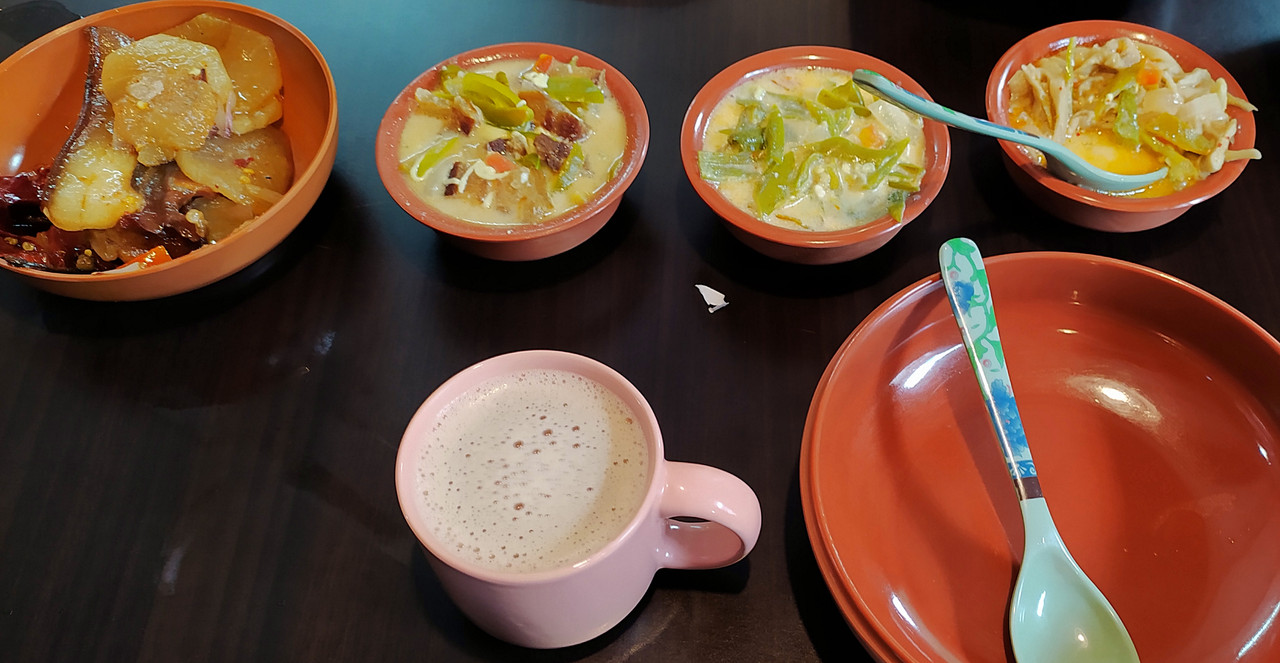
Momos
Momos are originally Tibetan, but they are found all over the Indian subcontinent. In fact, I grew up eating momos so often in Delhi that I used to think it was a Delhi street food! It was only when I started going to university, I learned it is actually a part of traditional northeast Indian cuisine.
Bhutan too has its own style of momos. Here I tried cheese and potato momos for the first time, best served with spicy chilli sauce. I think I prefer chicken and veggie momos the best.
Bhutanese noodles
Noodles are found all over the Himalayan belt and Bhutan is no exception. Bhutanese noodles can also be eaten as noodle soup or fried noodles. As with most Bhutanese food, they are typically very spicy and served in several variations.
Crispy spicy potatoes
Crispy spicy potatoes are common in Bhutan and Sikkim as a starter or just a snack. As the same suggests they are crispy and spicy potatoes. They look like pimped-up french fries with red onion and coriander garnish.
A bit of warning though, once you taste them, regular french fries will be ruined for you forever!
Crispy spicy potatoes are best enjoyed in combination with a chilled Bhutanese beer.
Bhutanese Beer
Bhutan has quite a large brewery industry and a variety of beers. Druk beer is a well-known brand in Bhutan and we found it very comparable to some of the European beers. My favourite was, however, Bhutanese red rice beer.
Suja
‘Suja’ or butter tea is a traditional warm beverage, and you’ll find this all over the Himalayan region. Its origins can be traced to Tibet as well. Now it is a common hot drink in the entire Himalayan and Karakoram belt.
Tips for Travelling in Bhutan
- If you are travelling to Bhutan independently (as in without a tour operator), request your hotel to arrange a taxi or tour guide for you.
- Bhutanese society is cash-based. You will have a hard time using your credit card. Make sure to take a card that you know you can use at local ATMs.
- Pack a high-SPF sunscreen or a hat. Bhutan is a high-altitude country. The sun can be very intense here even at lower temperatures.
- Most hotels provide jugs of RO water to reduce the usage of packaged water. RO water is safe to drink. If you are unsure, you can always boil it in the kettle provided in your room.
- In Bhutanese restaurants, the servers typically do not come to the table to take orders. Instead, every table has a notepad, a pen and a menu. You write down what you want on the notepad and a waiter comes after a while to take it. Payment is also made at the counter.
- Tipping is not necessary but definitely appreciated.
- When you visit any religious sites, you have to remove your shoes before entering the monasteries. Make sure to wear socks or pack a pair in your backpack. Bhutan is a Himalayan country and the floors especially stone floors feel very cold very fast.
- When you are in a monastery, you always enter and move in a clockwise direction. This is not just a Bhutanese thing though. Clockwise circumambulation is a common practice in Dharmic religions across the Asian continent.
- As for appropriate clothing in religious sites, you are expected to cover your shoulders and knees.


